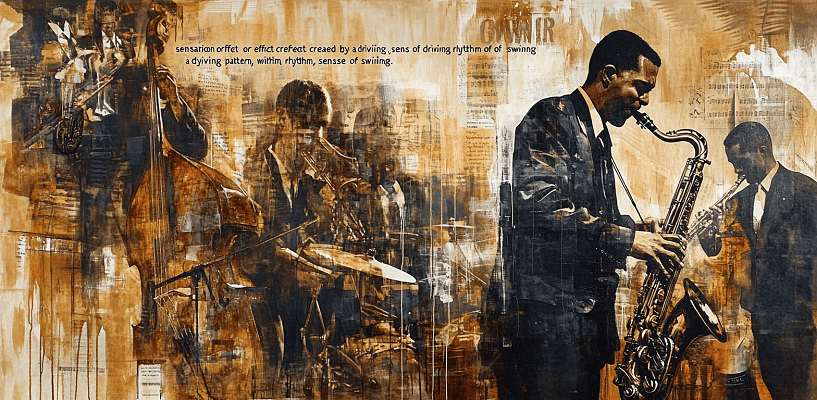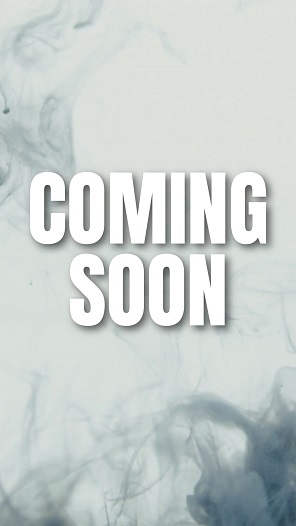- ॐ, Home
- >>
- US
- >>
- Entertainment
- >>
- Music
- >>
- Groove
Groove

Groove is that intangible element that gets ‘your head nodding, your feet tapping, and your body moving instinctively.’ Genres like ‘funk, jazz, hip-hop, and R&B’ are deeply rooted in groove, with “syncopated beats, dynamic bass lines, and tight drum patterns” driving the rhythm forward.
Great musicians understand groove as more than just timing; it’s about ‘feel.’ A drummer’s pocket, a bassist’s lock-in with the kick drum, and “a guitarist’s strumming pattern” all contribute to the groove of a song. Legends like “James Brown, J Dilla, and Nile Rodgers” mastered the art of groove, crafting infectious rhythms that still captivate listeners today.
The ‘slow groove’ laid down by the backup singers likely establishes a ‘soulful, steady’ pulse, while the clapping on the backbeats (typically beats 2 and 4 in a 4/4-time signature) amplifies the rhythm, making it even more infectious and driving.
In particular, the ‘pop and funk’ genres were said to elicit a greater groove experience than rock music. The listener’s musical familiarity and personal tastes also connect to their perception of groove.
In the 1940s, during the ‘swing and jazz’ era, the term ‘in the groove’ denoted ‘a particular musical routine, preference, or style,’ suggesting its aesthetic characteristics. In the 1970s, “groove” was primarily linked to music styles like ‘funk and soul.’ At about the same time, “groove” was even employed as a phrase to indicate that something is “cool.” In the past twenty years or so, groove has increasingly been characterized as ‘an enjoyable urge to dance to music.’
But groove isn’t confined to music. It’s a metaphor for life. When you’re in your groove, you’re in sync with yourself and the world around you. It’s that state of flow where “creativity blossoms, productivity soars, and joy feels effortless.” It’s the feeling of being fully alive.
Details -
Viewpoints of musicians -
Groove is highly subjective. What one person perceives as a great feeling, another might find ‘too stiff or too loose.’ This subjectivity makes groove a personal and often intangible aspect of music.
Some describe ‘groove’ as the manner in which seasoned musicians interpret and perform rhythms, frequently by playing just ‘before or after’ the beat.
Small rhythmic deviations by rhythm section members, like the ‘bassist,’ can greatly change a song’s feel. This highlights how crucial each musician’s contribution to forming the groove is.
Groove as Rhythmic Feel -
Rhythmic patterns that give a piece of music a unique ‘rhythmic feel’ is what “Richard Middleton” (1999) refers to as groove. A repeated rhythmic framework creates this ‘feel,’ which can be delicately altered to “maintain interest” and advance the song. In essence, groove is not just about repetition but also ‘how variations within that repetition’ influence the experience of both ‘the artist’ and ‘the audience.’
Groove and Shuffle Note -
Richard Middleton also associates groove with “shuffle note.” The term ‘shuffle note’ refers to the subtle deviations from precisely ‘even, metronomic’ note placements, which introduce a sense of swing or bounce to the rhythm. These slight timing shifts, whether ‘intentional or instinctive,’ are what give a groove its ‘human, organic’ quality, making it feel more alive and engaging compared to a ‘rigid, mechanical’ rhythm.
This concept is particularly evident in genres like ‘jazz, blues, funk, and hip-hop,’ where the “shuffle” or “swung” rhythm is a defining characteristic. For example, in a ‘shuffle’ rhythm, the division of the beat is not perfectly even; instead, the first note in a pair is slightly longer, and the second note is slightly shorter, creating ‘a lilting, rolling’ feel. This deviation from strict timing is what makes the rhythm groove — it invites movement, whether through ‘dancing, foot-tapping, or head-nodding,’ and creates a sense of forward momentum.
Groove in Improvisational Music -
The phrase “being in the groove” is often used to describe a state where musicians in an ensemble are deeply connected and locked into a rhythmic flow. This state is often described as a pinnacle of collective improvisation, where the individual contributions of each musician blend into a ‘unified whole’ that feels greater than “the sum of its parts.” Scholars like ‘David Bohm and John Jaworski’ liken this phenomenon to an “evoked field” — a kind of ‘collective energy or invisible connection’ that emerges among the players, influencing their interactions and elevating the music to a higher level of expression.
Peter Forrester and John Bailey emphasize that achieving this state of groove is not accidental but is facilitated by “specific conditions and attitudes among the musicians.” Musicians must be ‘open and attentive’ to what their fellow players are contributing. Rather than ‘competing or overshadowing,’ musicians should aim to enhance and support each other’s musical ideas. Active listening and “a readiness to adapt one’s own playing to blend in with the group sound” are necessary for this.
Groove as Process and Experience -
Musicians continuously respond to each other, adjusting their playing in real-time to maintain the ‘groove.’ Both “musicians and listeners” perceive the music as a series of recurring cycles, which provides a sense of structure while allowing for creative exploration/experiments within that framework.
Groove is not just an intellectual concept; it is felt in the “body and emotions.” It invites movement, whether through dancing, foot-tapping, or ‘simply feeling the pulse of the music.’ When a groove is fully realized, it can create a sense of ‘unity and transcendence,’ where individual egos dissolve, and the music takes on a life of its own.
The Role of Microtiming and Rhythm Perception -
“Microtiming deviations” refer to ‘small, intentional’ variations in rhythm that can add a human feel to music. However, some research suggests that the strongest groove stimulation occurs when drum patterns are played with precise timing, without microtiming deviations. This suggests that, in some cases, exact rhythmic precision can enhance the ‘groove’ effect by making it easier for the brain to synchronize with the music.
Genres and Groove -
Funk and Soul -
By the 1950s, “funk” and “funky” began to describe music with ‘a raw, gritty, and rhythmically intense quality,’ particularly in soul music. Funk emerged as an offshoot of ‘soul music,’ prioritizing rhythm over melody. The goal was to create a “strong, distinctive groove” — a ‘repetitive, layered’ rhythmic foundation that locked listeners into a trance-like state.
James Brown, known as the “Godfather of Soul,” was a pioneer in developing funk music. His drummers, “Clyde Stubblefield and Jabo Starks,” were instrumental in crafting grooves that have influenced generations of musicians. Their drumming focused on ‘tight, repetitive’ patterns with syncopated snare hits and deep-pocket bass drum accents. This rhythmic style became ‘a hallmark of funk’ and later hip-hop, as many of their drum patterns were widely sampled in modern music.
In the Pocket: When a drummer plays “in the pocket,” it means their ‘timing and feel’ are rock-solid, relaxed, and perfectly aligned with the band’s rhythm. It’s not about technical complexity but about creating a ‘seamless, swinging’ groove that feels effortlessly right. Think of it as the sweet spot where precision meets soul.
Deep Pocket: This describes a groove that’s so locked-in and consistent that it feels almost gravitational. A drummer with a “deep pocket” can maintain that feel for “minutes or even entire songs” without losing the groove’s momentum or emotional intensity. It’s the hallmark of legendary funk and soul drummers.
R&B -
R&B is renowned for its strong, often syncopated rhythms. The “beat” serves as a steady foundation that invites ‘movement and dance,’ much like the groove in funk. The “rhythm” in R&B is groove-centric, anchored by syncopated drum patterns, swinging basslines, and “percussive elements like handclaps or shakers.”
‘Rich, jazzy’ chord progressions (7ths, 9ths) and call-and-response structures (rooted in gospel and blues) create ‘lush, emotional’ backdrops.
Vocals in R&B are central to the genre. Singers convey a wide range of emotions — love, longing, joy, and sorrow — often with ‘a distinctive smoothness or raw power’ that resonates with listeners.
R&B’s grooves and ‘a cappella vocals’ were sampled extensively in hip-hop. Collaborations between R&B singers and rappers (e.g., Mary J. Blige with Method Man) became genre-defining.
Reggae -
In Jamaican reggae, dancehall, and dub music, the term “riddim” (derived from the Creole pronunciation of “rhythm”) holds a unique and foundational role. Unlike in other musical genres where terms like “groove” or “beat” might describe a song’s rhythmic backbone, a riddim specifically refers to the instrumental rhythm pattern, often built around a ‘drum pattern’ or a ‘prominent bassline.’
Unlike many other music genres where each song typically has a unique instrumental track, in ‘reggae and dancehall,’ a single riddim can be used in multiple songs. Producers create a ‘riddim,’ and different artists record their own vocals over the same instrumental track, creating different interpretations of the same rhythmic foundation.
One of the most iconic riddims is “Real Rock,” recorded in 1967 by the studio band Sound Dimension (associated with producer Clement “Coxsone” Dodd’s legendary Studio One). The riddim hinges on a hypnotic bassline pattern — a single, deep, emphatic bass note followed by a rapid cascade of ‘lighter, syncopated’ notes. This looped bassline creates a trance-like groove, characteristic of reggae’s “one-drop” rhythm.
Because of its infectious groove, Real Rock played a significant role in shaping reggae music. The rhythm was so influential that it helped establish an entire subgenre known as rub-a-dub — a style of reggae that emphasizes ‘slow, sensual’ dancing and ‘deep, rolling’ basslines. Rub-a-dub later became a key precursor to dancehall music, which emerged in “the late 1970s and early 1980s.”
Jazz -
In more traditional styles of jazz — particularly those before the 1950s — the word “swing” was commonly used to describe a certain ‘rhythmic momentum’ that musicians aimed to achieve. Swing is achieved by subtly delaying the off-beats, creating ‘a smooth and flowing’ rhythmic feel.
By the 1950s, jazz began to incorporate more influences from ‘blues, R&B, funk, and Latin music,’ leading to the emergence of a new term — “groove.” Unlike swing, which is associated with a “triplet-based rhythm” (triplet-based subdivision of the beat), groove refers to a more ‘consistent, repetitive’ rhythmic foundation that locks the musicians into a shared perception of the beat.
The swing feel in jazz, created by ‘the ride cymbal pattern and walking bassline,’ is a classic example of groove. Musicians like ‘Miles Davis, John Coltrane, and Art Blakey’ were masters of creating ‘dynamic, shifting’ grooves.
Groove is especially prominent in styles such as: organ trio jazz, latin jazz and ‘funk and soul jazz.’
Hip hop -
The backbone of hip hop is its beat — often constructed from “looped breakbeats, samples, and digitally produced rhythms.” Over these beats, rappers deliver ‘intricate, fast-paced’ lyrics with a distinct flow, wordplay, and rhythm. This fusion of ‘beat and rhyme’ is central to the genre’s energetic and engaging feel.
Sampling — ‘borrowing and recontextualizing’ snippets from other recordings — is a hallmark of ‘hip hop’ production. Producers craft layered beats by mixing traditional instruments with digital effects, creating complex textures that have both ‘nostalgic and innovative’ qualities.
DJs are integral to ‘hip hop’ culture. They not only provide the musical backdrop but also add their own creative twists through techniques like ‘scratching, mixing, and beat juggling.’ Live ‘hip hop’ performances are interactive experiences, often featuring call-and-response elements that ‘engage and energize’ the audience (i.e., responsible for groove generation).
That’s all friends.
Suggestions or corrections for this page can be submitted from the “contact us” page.
Ads Section

